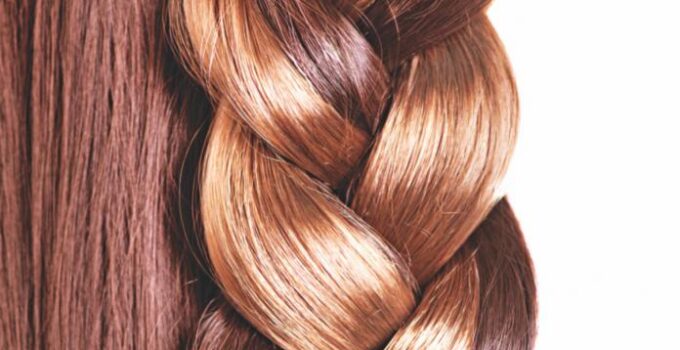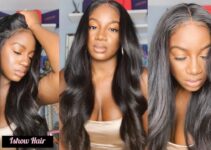If you have unhealthy hair, you might think all is lost. However, your hair is actually quite resilient. And if you take the time to treat it well, you can restore some of that luster that you once had. All it takes is a simple shift in how you approach your hair care regimen.
Page Contents
Understanding Hair Growth
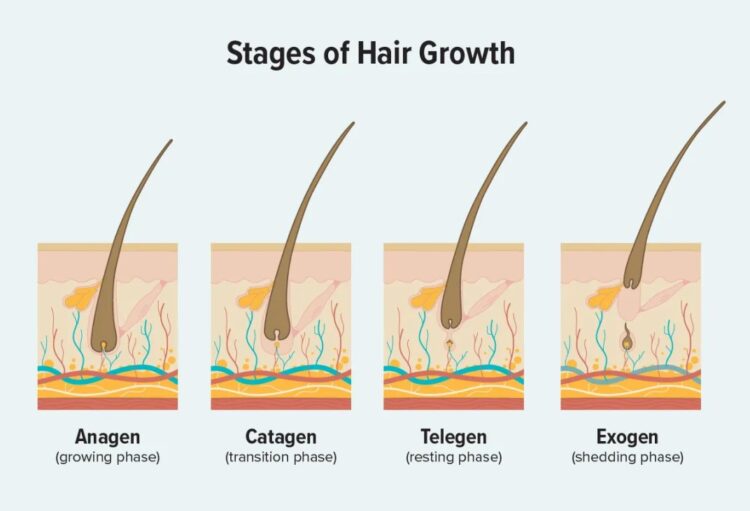
img source: healthline.com
Before we dig deep into the causes of unhealthy hair and how you can overcome these issues to enjoy a thick, full mane, it’s important that we understand how it grows and what the process looks like.
The most basic explanation is that your scalp consists of thousands of tiny pocket-like structures known as follicles. Inside these follicles, there are roots. And each root is made up of protein cells that ultimately become hairs. Also inside your scalp are blood vessels, which supply nutrients to your hair follicles. As these nutrients supply the follicles with essential nutrients, hair pokes through and grows.
Hair growth occurs in stages:
- Anagen phase.
During this phase, the stem cells of the follicle multiply and produce fibers and hair protein. In other words, it starts to grow. (This stage lasts for several years.)
- Catagen phase.
When a hair reaches the end of the anagen phase, it enters into the catagen phase. At this point, it becomes detached from the root, and the follicle transitions into a regression phase. The follicle shrinks rests and then renews itself.
- Telogen phase.
At the telogen phase, which lasts for several months, the hair rests and then emerges from the roots. This is a critically important part of the process, ultimately paving the way for growth.
- Exogen phase.
The exogen phase is the final stage of the growth cycle. This is when the hair detaches from the scalp and sheds. On any given day, 50 to 100 strands of hair will fall out. The hope is that 50 to 100 hairs are regrowing at the same time. If fewer hairs are regrowing, this is when hair loss occurs.
Typically, each hair follicle goes through a full cycle every four to seven years. In some people, a follicle only reaches two to three full cycles. In other people, a follicle may enjoy seven, eight, or even nine cycles before losing the ability to grow hair. But either way, these follicles/hair must be nourished in order to get optimum results.
Common Causes of Unhealthy Hair
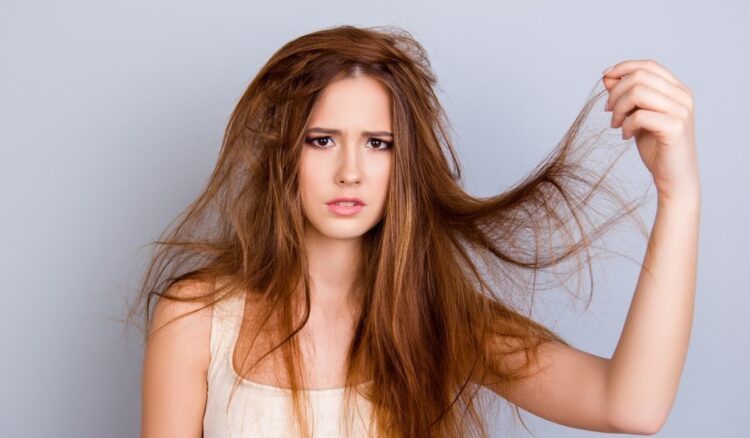
img source: more.com
Unhealthy hair – which is a term we’ll use to describe hair that’s dry, brittle, and/or thinning – can be caused by any number of underlying factors. Some of the most common include:
- Aggressively brushing hair
- Aggressively towel-drying hair
- Excessive heat drying
- Excessive use of chemicals
- Overwashing or underwashing
- Poor diet and nutrition
- Stress and other underlying health issues
- Genetics and age
The more of these underlying issues that are present, the more unhealthy your hair becomes. But by neutralizing these risk factors and implementing healthy habits that nourish and care for your hair, you can stop the damage and begin the process of restoration.
The Healthy Hair Formula
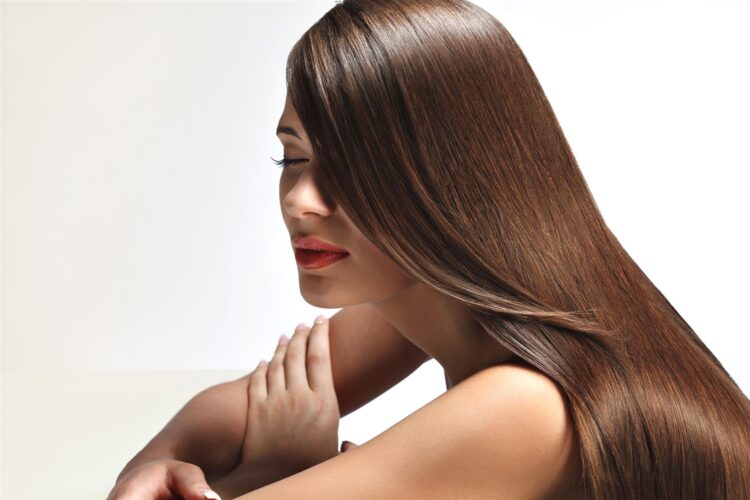
img source: ultimateimagesalon.com
Now that you understand how hair growth occurs and know some of the common causes of unhealthy hair, let’s explore the secret to enjoying healthier hair. It looks something like this:
1. Improve Your Diet
Intuitively, you know that a proper diet is required to look fit and feel well. But did you know that you also need the right nutrition in order to enjoy healthy hair?
“Your hair cells are the second fastest-growing cells in your body (second only to intestinal cells),” haircare expert Anabel Kingsley writes. “To add to this, you have roughly 120,000 hairs on your scalp, all of which need nourishment in order to grow. But because hair is not a vital organ or tissue, your body will never prioritize its nutritional needs.”
Few people know this, but damaged and thinning hair is actually one of the first signs of nutritional imbalance. Typically, it’s the result of a deficiency of an important nutrient. However, it can also be caused by excessive consumption of certain foods (like vitamin A).
If you want healthy hair, it all starts with eating healthy. Top recommendations include eating a healthy breakfast, hydrating, consuming enough protein and iron, enjoying ample vitamin C, limiting your dairy intake, and cutting out processed foods.
2. Address Issues
Don’t let unhealthy hair go untreated. By proactively addressing the underlying issue, you can keep a short-term issue from becoming a long-term problem.
For example, let’s say you’re like millions of other Americans and your hair is thinning. Rather than just chalk it up as a normal part of aging, look for solutions. According to Kiierr.com, there are plenty of good hair growth products and treatment options on the market. This includes DHT blocking shampoo, low-level laser therapy (LLLT) caps, root lifting serums, etc.
The sooner you address issues, the more likely it is that the solution will work. It’s much easier to stop hair loss than it is to regrow it. And though there are options for both, you stand a better chance of enjoying a healthy head of hair if you’re able to proactively deal with it on the front end.
3. Be Intentional With Styling
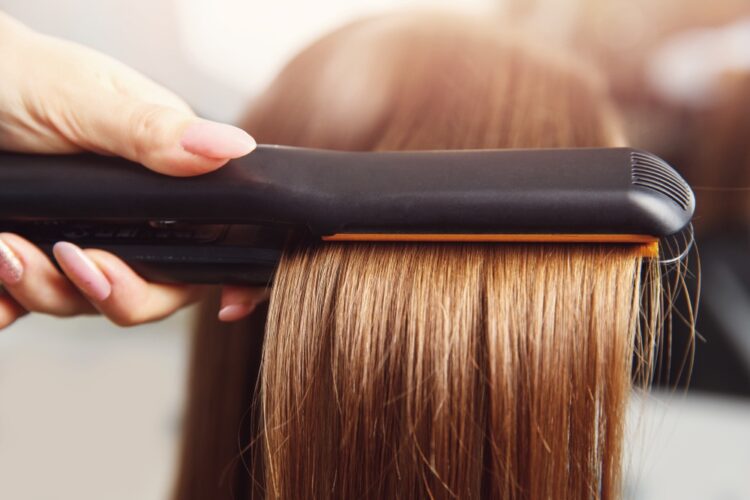
img source: marchellesalone.com
When most people style their hair, they’re only focused on how it looks. They’ll go to almost any means just to have “good” hair. Unfortunately, “good” isn’t always “healthy”. That’s because most mainstream styling products and advice get it totally wrong.
Chemicals, heat, and excessive styling are all catalyzing factors in poor hair quality (ultimately leading to its loss). If you want it to look good without compromising its long-term vitality, you have to be intentional with styling it appropriately. This means using chemical-free products, washing your hair with cool water, and limiting your use of heat styling tools like straighteners and blow dryers. Using natural products, drying hair naturally, and styling naturally does wonders for any type.
Put Your Hair on a Healthy Path

img source: appreciategoods.com
Growing healthy hair isn’t rocket science (or even molecular biology). While some people have genetic and hereditary issues that significantly impact the health and appearance of their hair, there are almost always ways to enjoy a healthier one. Hopefully, the tips outlined above give you a solid place to start.

